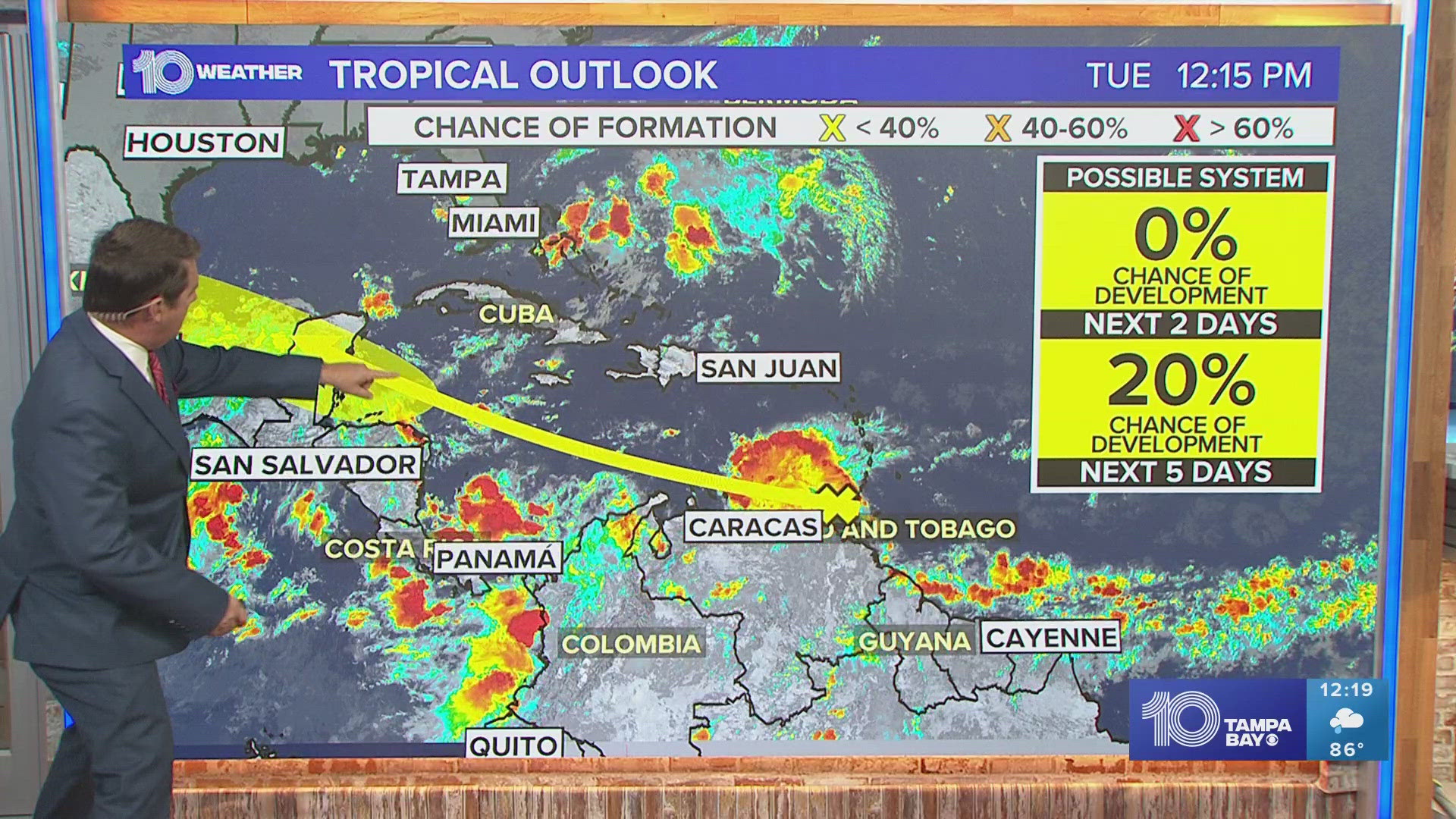ST. PETERSBURG, Fla. — Satellites have picked up a plume of Saharan dust working its way off the coast of Africa and across the Atlantic. The giant dust layer could impact Florida at the end of the week into the weekend.
The Saharan Air Layer (SAL), commonly known as Saharan dust, originates along the southern edge of the Sahara Desert in Africa. Tropical waves in the lower-to-middle atmosphere lift large amounts of dust into the atmosphere and carry it across the Atlantic, according to University of Miami hurricane researcher Dr. Jason Dunion.
The Saharan dust is usually a 2 to 2.5-mile-thick layer of the atmosphere that starts about a mile, or 5,280 feet, above Earth's surface.
Dunion says the Saharan Air Layer usually becomes most active starting mid-June and peaks from late June to mid-August. During the peak period for Saharan dust activity, the SAL can reach as far west as Florida, Central America and even Texas.
How Saharan dust affects tropical activity, hurricanes
The National Oceanic and Atmospheric Administration (NOAA) tracks the SAL because it can directly impact tropical activity and hurricane formation.
Dunion explains Saharan dust has "unique properties of warmth, dry air and strong winds" that can temporarily hinder or prevent hurricanes from forming or intensifying. The dust can also suppress other thunderstorms or tropical moisture activity.
Typically, hurricane seasons with a large number of Saharan dust events tend to see fewer storms develop, according to NOAA's Climate page.
Florida impacts from Saharan dust
As stated above, Sarahan dust can affect tropical moisture in the atmosphere, curbing storm activity. Our current forecast for the Tampa Bay area still shows a 40 to 60 percent chance of rain for the later half of the week into the weekend, but that could change depending on how close the Saharan dust gets to the region.
Locally, Saharan dust can bring hazy skies and brilliant sunrises and sunsets to the Sunshine State.
The dust could also affect air quality, specifically for people more vulnerable to respiratory issues or ailments.

